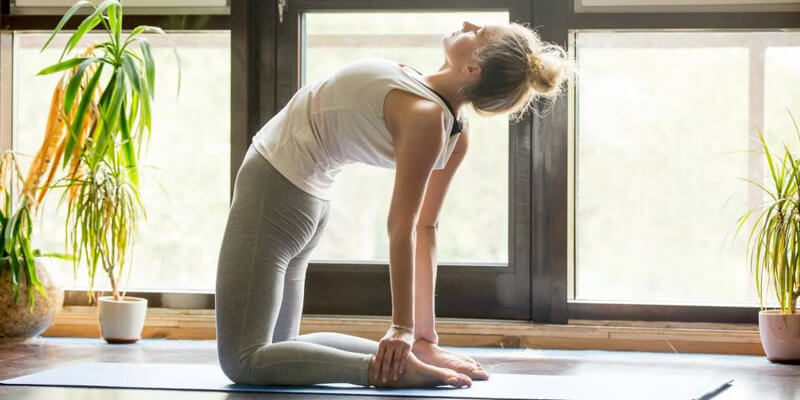@Dolma
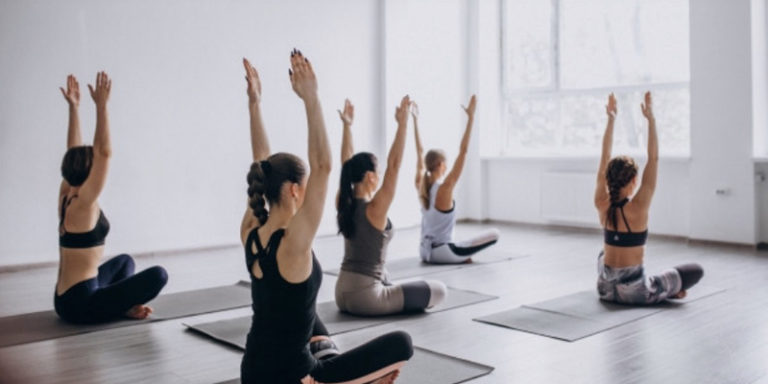
7 Yoga Postures to Relieve Kidney Stone with Step-by-Step Guide
It is a well-known fact that regular practicing of Yoga asanas enhances and regulates the connectivity between body, mind, and soul. It can significantly improve the body parts and organs, with proper functioning.
“Yoga has been practiced for more than 5000 years with more than 1000 styles and postures”
Among all the body organs, kidneys play a crucial role in removing waste, extra fluids, and acids deposited by body cells and balancing the essential nutrients and minerals in our body. However, an unhealthy diet, less intake of water, and other genetic factors can lead to disorders and malfunctioning of kidneys.
More than 100,000 citizens are reported to have diagnosed with end-stage kidney disease every year in India
Kidney stone formation has been one of the most fatal conditions that can result in critical circumstances like kidney failure if left untreated.
If you once had a kidney stone, the chances of forming more stones are high by 30-50%.
The worst stage of kidney stone would require huge expenses and time on the treatment process. Quite fortunately, regular practicing of yoga can reduce kidney stones. Here are a few yoga asanas (positions) and their steps that can get you rid of kidney stones.
7 Yoga Postures to Relieve Kidney Stone with Step-by-Step Guide
- Ushtra Asana
- Uttanpadasana
- Pawanmukt Asana
- Dhanur Asana
- Bhujangasana
- Garudasana
- Ardha Matsyendra Asana
- The Gist of It
Ushtra Asana
People who already have kidney stones formed can practice this asana to relieve from its symptoms. Ushtra Asana, also known as Camel Pose, delivers fresh air to the kidneys and neutralize the kidney stones.
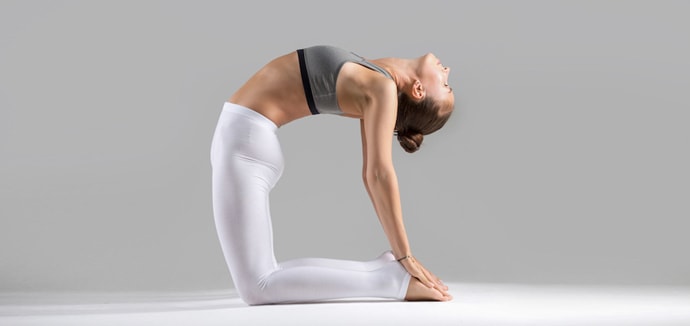
Step-by-Step Direction
- Stand with your knees apart.
- Let your arms lay relaxed on their respective sides.
- Gently bend your body backward.
- Make a body posture with your hands holding the knees and stay still for a few seconds.
- Relax and release to its initial posture.
Uttanpadasana
This raised-leg posture is beneficial in fortifying the muscles of the lower back, legs, and pelvic area. At the same time, it allows the abdominal muscles to constrict. Thus, it stimulates the functions of the kidney, pancreas, and liver.
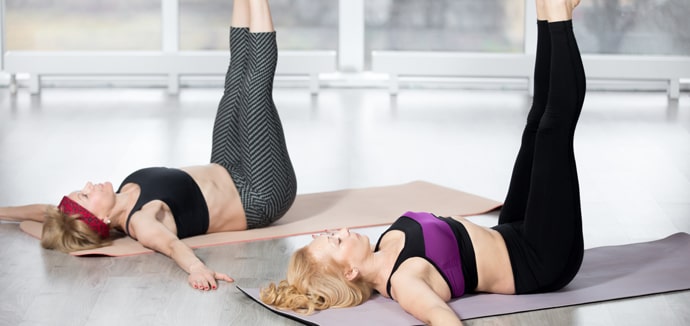
“In olden times, Yoga was practiced as a mode of healing”
Step-by-Step Direction
- Lie down on the floor facing upwards.
- Relax your hands by making palms facing down.
- Take a deep breath and gently raise your legs upward, perpendicular to the ground.
- Monitor your legs whether they are in correct and straight position with toes pointing upwards.
- Having acquired this posture for a while, restore back to the original position.
Pawanmukt Asana
The Pawanmukt Asana is commonly known as Wind Relieving Pose. It helps to prevent gastric problems, constipation, and relieving kidney stones.

Step-by-Step Direction
- Rest your body on a smooth floor, facing upwards.
- Gently bring your knees close to your chest with a deep inhalation.
- Hold this posture and take your nose with a tendency to touch the knees.
- Stay in this posture for a while, taking a few deep breaths.
- Slowly exhale and release to its original posture.
- Try performing this thrice a day.
“Practicing yoga without consulting an expert while having other health conditions can be dangerous.”
Dhanur Asana
It resembles the feature of a bow, which is why it is also known as the back-bending pose. Regular practice of this yoga posture can help to reduce kidney disorders by fortifying its functions.
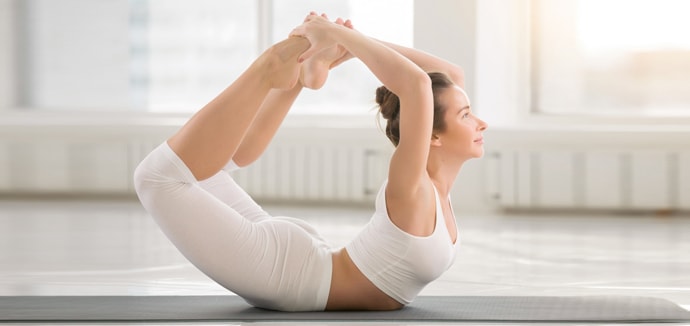
Step-by-Step Direction
- Relax your body by facing downwards on a clean floor.
- Let your arms rest on their respective sides by setting the palms open flat, facing the sky.
- Spread your legs a bit apart from each other.
- With a deep exhalation, bend and fold your knees as close as possible to your buttocks and hold the ankles with your hands.
- Gently raise your face, neck, chest, and knees upward, with your stomach’s naval area touching the ground.
- Hold on this posture for a few seconds and slowly release your body parts in their original positions.
Bhujangasana
In Sanskrit, Bujangasana means “Cobra Pose”. The stretches, movements, and breathing mechanism involved while attaining this posture nourishes the kidneys and massage them.
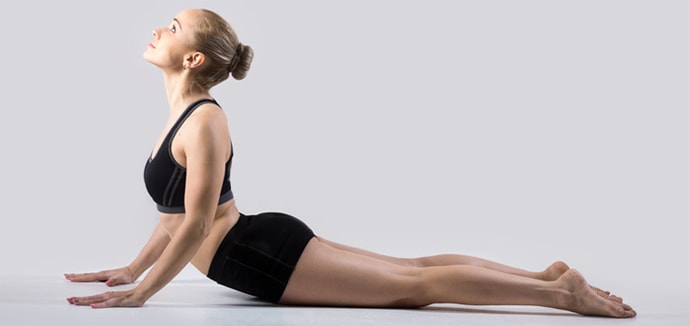
Step-by-Step Direction
- Lying with your stomach downwards, move your head, neck, and trunk upward.
- Support your stretched body section by your palms, making the balance.
- Move your face upward slowly to create an Arc with your neck.
- Extend your toes and stretch fully on the floor, letting your stomach to impose pressure on the ground.
- Let your body stay in this position by taking 9-12 deep breaths and return to the initial body posture slowly.
Garudasana
The ‘Eagle Posture’ or Garudasana can be attained in a standing position by making a balance with one leg. It stimulates the blood flow into the kidneys and improves their functions. Ensuring this, the Garudasana eliminates the symptoms of kidney stones.
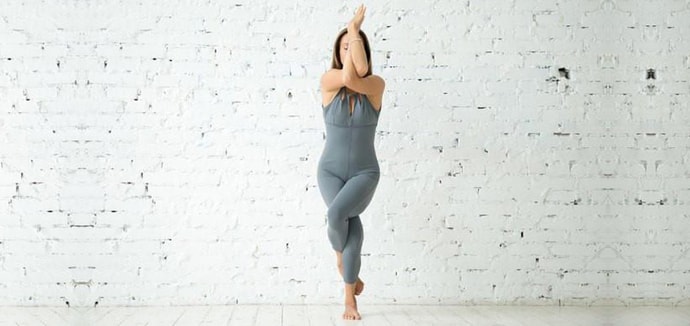
Step-by-Step Direction
- Stand straight on floor. Let your right leg cross around the left thigh.
- Balance yourself with the left leg.
- Lift your elbows up to the height of your shoulder.
- Cross your right elbow around by the left elbow. Take your palms close to each other.
- Take a normal breath and stay for about 20 seconds in this position and release the parts slowly.
- Relax and start attaining the posture again with the opposite leg and elbow.
- After attaining each position, rest yourself on the ground by making a posture of a corpse (shava asana).
Ardha Matsyendra Asana
The Ardha Matsyendra Asana, meaning “Lord of the Fishes Pose”, is a spinal twisting pose. It nourishes the functioning of kidneys and prevents problems like urinal infection.

Step-by-Step Direction
- Sit comfortably on floor, stretching both the legs in front.
- Slightly fold your left knee and put its heel under the right hip.
- Place the right leg crossing over the left knee.
- Touch the right leg’s knee with your left hand.
- Take the right hand behind your back and let it press on the floor.
- You can now twist your waist towards the right, placing your face looking at your right shoulder.
- Make your back straight upward and close your eyes.
- Take a deep breath and stay in this position for a few seconds.
- Exhale and slowly release the posture in the order starting from right hand, waist, chest, and head.
- Repeat an equivalent procedure on the other side as well.
“Today, more than 18,000 yoga schools have been established all over the world.”
The Gist of It
If taken into consideration, yoga can be your lifetime companion to sustain a healthy life. Daily practices of attaining these positions under proper guidance of an expert can effectively improve your kidney functions. It will also reduce other malfunctions and disorders like kidney stone formation.
At the same time, it is also advisable to drink plenty of water alongside practicing yoga. However, your diet and lifestyle also have a role to play in sustaining a healthy and sound functioning of your body organs.






